Tomorrow marks the first chance for Pokémon TCG players and collectors to get their hands on Scarlet & Violet cards. The Build & Battle pre-release boxes, available at specialist TCG stores, allow an early peek at the brand new era for the game due to be fully released on March 31. We’ve already torn open a huge stack of packs, and can give you the early scoop on the big changes to the enormously popular TCG.
Every three years, Nintendo and The Pokémon Company (TPCi) release not only a brand new Pokémon game, but also a whole new era of Pokémon cards prominently featuring the latest generation of new Pokémon to have been introduced to the series. Following last November’s Pokémon Scarlet and Violet, the world outside of Japan is finally receiving the matching cards at the end of this month. They come with some of the biggest changes the franchise has ever seen, and having opened a pile of them sent to us by The Pokémon Company, it’s time to let you know what to expect.
Scarlet & Violet’s New Changes Are A Silver Lining
Pokémon cards have had yellow borders since they first launched internationally in 1997. But not any more. With the SV base set, international players are syncing up with those from Japan to have silver borders. The changes don’t stop there: Set symbols are gone, replaced by letter/number codes in a black box; energy cards have a new layout and set codes; and Trainer cards are now more usefully delineated into Supporter, Tool, Item, and Stadium categories.
However, those worrying that the changes might be too jarring should be calmed by knowing these changes—beyond the borders—are very subtle. They’re all tweaks that improve clarity, making it easier to recognize cards at a glance, and there’s no need to continue to memorize more than the previous 150-ish set symbols. And those borders? Honestly I stopped noticing them within minutes. If anything, it’s a useful way to distinguish the new cards from older ones whenever you drop your bulk box on the floor.
How Are Scarlet & Violet’s Pull Rates?
Ever since Pokémon TCG started introducing Ultra Rares, Secret Rares, Alt Arts, Trainer Galleries, Gold cards, Rainbow cards, and so on, the chase for cards has become far more involved than those previous simple hopes for a foil window. They’ve also become increasingly difficult to pull, ensuring such cards gain enormous value, both monetarily and in desirability. That’s obviously entirely about making money, with TPCi hoping people will keep buying booster packs in the unlikely hope that their five bucks will secure a special card, while more likely resulting in ten pieces of dull, untextured cardboard. But since January of this year, Crown Zenith has been changing all that with its relative generosity.
With rates for pulling Ultra Rares or better seeming to balance out to one in two packs, 2023’s killer final Sword & Shield (SWSH) set was always going to be a tough one to follow. Either TPCi would have to essentially devalue the more special cards forever, or players would have to take a blow as hit rates return to “normal.” Sadly, and inevitably, it’s the latter. However, it’s a blow that’s somewhat cushioned by the decision to hugely improve the numbers of foil cards in every pack.
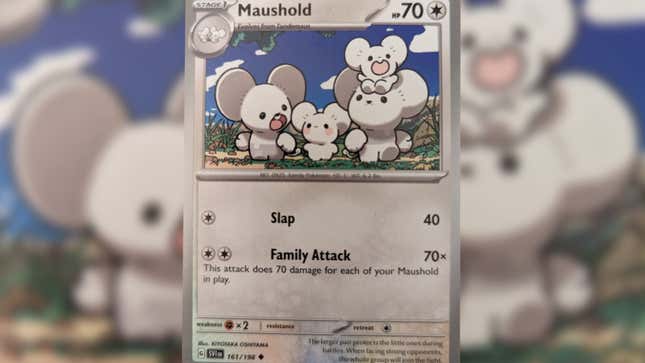
(Oh, and they’ve also changed the terminology again. Firstly reverse holos are now called “Parallel Set” although no one is going to ever use that. Then there’s now a level between “Rare” and “Ultra Rare” called “Double Rare,” which is being used for the regular versions of ex cards, marked with two black stars. “Ultra Rare” (two grey stars) now appears to be the new term for Full Art, and the term “Illustration Rare” (one gold star) seems to be what was previously Alt Art. “Special Illustration Rare” (two gold stars) I genuinely cannot fathom, and just seem to be the same as Illustration Rares. For instance, of the Ralts, Kirlia, Gardevoir tryptic, the first two are Illustration Rares while the third is Special Illustration Rare…I’ve no clue. And then there’s “Hyper Rare,” with three gold stars, here reserved for Gold cards. Good grief
So yes, SV absolutely does mark a return to those less fun times of lower pull rates. That’s tough on this 45 year old, and it’ll be even tougher on kids whose appetites have recently been altered. Yet, at the same time, it’s unquestionably made the very few big pulls we’ve found feel a lot more special. That’s a tricky balance for sure.
Of the 37 packs of SV I’ve opened, I’ve pulled a total of seven ‘ex’ cards, the new era’s version of SWSH’s V-cards. Of those, four are Double Rare, one is Ultra Rare, one is Special Illustration Rare, and one—spectacularly—is a Hyper Rare gold Koraidon. I also pulled a single Ultra Rare full-art Trainer, Katy, alongside the gorgeous Illustration Rare Slowpoke, and the Illustration Rare Ralts.
But that’s it. Ten non-standard cards from 37 packs (roughly one in four). That might seem about normal, even decent when looking back at the miserable pull rates from sets like Pokémon Go and Silver Tempest, but it’s still galling following on from Crown Zenith.
What About All Those New Holos?
These pull rates are softened by the radical change in numbers of regular foil cards in every pack. Every booster pack in Scarlet & Violet is guaranteed to have at least two reverse holos, and one regular holo card. (Previously, the majority of packs you bought would feature just one reverse holo and nothing more.) Each of these slots can feature a better card in its place, but you won’t get less. Which is to say, there are no more “dud packs.” Or, if your glass is half empty, dud packs now feature two reverses and a holo.
Doubling up on reverse holos is definitely going to make it easier to complete a “master set,” where people attempt to collect every card in a set, including reverse holos of every standard card. However, the odd corollary to this is that getting a holo in every pack is enormously mitigated by just how few there are to collect! In those 37 packs, I now have two regular holo Koraidon, three Pawmot, three Klefki, and four Cyclizar.
In fact, of the 198 cards in the main set, there are only 19 standard holos to collect! And in those 37 packs, I got all of them. So, you know, they’re effectively junk. In fact, of those 198 cards, I’m now missing only 18 regular cards and seven ex cards. The gaps are all what were once called Secret Rares, the 60 cards that follow.

What’s The Deal With Pack Tricks And Code Cards?
Here’s another big change: there’s no longer a need for a “pack trick.” Since the beginning of Pokémon TCG, cards have always been in a specific order, but a weird one. For whatever reason, it’s been necessary to move three or four cards (depending on the set) from the top of the pack to the bottom before opening them, if you want to make sure the best cards are revealed last. But no more!
Packs in SV are far more sensibly ordered. You have your commons, uncommons, then reverse holo slots, and then your holo slot. After that, there’s the Energy card, and the code card. So now all you need to do is lift off the top two cards when the deck’s face down, turn the whole thing over, and start looking through. And yeah, you definitely do want that code card and Energy to be there, because they’re the ones that will take the beating when the pack’s bashed around, making sure your rares are nice and safe from value-destroying damage.
But that code card. It’s gotten strange. In the last few years, TPCi have used code cards to advertise the online version of the game, and offer a QR code and equivalent string of letters and numbers that can be entered online to get a digital version of the pack. However, they’ve had another purpose: they’re there to prevent people weighing packs. In early sets (and crazily, it’s still the case for new sets in Japan) you could weigh the pack on a very sensitive scale to see if it’s slightly heavier—if it is, that means it contains a rarer card. To counter this, outside of Japan, code cards were added and differently weighted with different colored so as to balance this out. It’s meant that for years, you’ve been able to tell if you’ve got a dud pack by the color of the code card.
But in SV, the need for changing the weight of packs is gone, since the two extra foils makes it impossible to detect the full-art cards. So you’d assume that all code cards would be identical, right? Bizarrely, that’s not the case. In the boxes we were sent by The Pokémon Company, all the code cards for the packs in the Build & Battle box and the Elite Trainer Box, had black borders, and all the codes for the Booster Box were white! Why? I have absolutely no idea at all. But rest assured, it doesn’t mean anything, and from now on you’ll no longer have you pack “spoiled” by seeing which color border appears on the code card.
But Does Scarlet & Violet Look Pretty?
Oh my goodness, yes. We’ve already celebrated just what a fantastic collection of art this set includes, and it’s so lovely to see them in person. The standard ex cards make amazing use of breaking their frames, the half-art busting out of the cards’ windows, almost looking like they’re escaping the sides of the cards themselves.
The Slowpoke was one of my chase cards, illustrated as it is by Toshinao Aoki, the artist behind the legendary Surfing Pikachu card. It’s so lovely to see with my own eyes. Plus there are some lovely surprises in the standard cards, like the adorable Maushold illustrations, and the enormous detail in the evolution sets for all three Paldean starters. The art has rarely been in question across the 26 years of Pokémon TCG, but with SV it is unquestionably better than it’s ever been before.
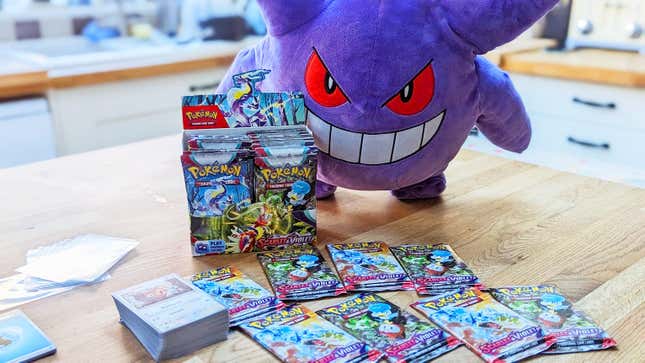
How Will Scarlet & Violet Change The Game?
It’s definitely early days to draw any conclusions on how the new set will affect the TCG’s battles. Build & Battle decks will be in play from tomorrow at your favorite gaming store if you want to get an early impression, but it won’t be until mid-April before the cards will become legal for proper matches.
However, the ex cards really do look likely to cause a stir. HPs and damage levels are off the charts, with a card like Great Tusk ex packing a three-energy attack that does a ludicrous 250 damage, the penalty being it also does 50 damage to itself. But given it starts on 250HP, it’ll deal out a hell of a lot of punishment before it takes itself down.
A big change this set is that some ex cards can only be played as evolutions. Oinkologne ex, for instance, is a Stage 1 card evolving from Lechonk, but once it’s in play it’ll do a crazy 210 damage for three energy, the only thing vaguely holding it back is a coin flip each time, with tails meaning it misses its attack next turn. But even its one-energy attack is dangerous: It’s 10+, but that plus is 30 damage for each of your opponent’s benched Pokémon. Five on their bench and you’re hitting for 160 for one energy.
Get a Stage 2 ex and it’s madder still. Magnezone ex has 330HP (!), with a one-energy 50x attack, multiplied by all energy cards your opponent has attached to all their Pokémon! For two energy, it’s a 220 attack, with just 30 points inflicted to itself. Oh, and making Magikarp vital once more, the Stage 1 Gyarados ex does a bog-standard three-energy Waterfall attack for 100, but a mindboggling five-energy Tyrannical Tail which punches out 180+, but that doubles if there’s any damage at all on the opponent’s card!
New Trainer cards aren’t making a spectacular difference in this base set, but the Defiance Band Tool card seems like it could get a lot of play. If you have more Prize cards than your opponent, the Pokémon it’s attached to does 30 extra damage. Useful for fighting back from behind. Also new is Katy, who does the standard feat of shuffling your hand into your deck then drawing new cards, but in her case the total drawn is a massive eight.
And for trolling fans, Team Star Grunt has your back. It’ll allow you to take an energy card attached to your opponent’s active Pokémon and put it on top of their deck.
So, Waddya Reckon?
It was always going to be tough stepping back from Crown Zenith’s pull rates and volume of stunning collectible cards. But Scarlet & Violet cushions that blow well with its guaranteed holos, extra reverse-holos, and special art that maintains the extraordinarily high standards. However, featuring so few holos is a big mistake, and quickly renders their appearances repetitive and junky.
However, this is definitely a set designed to refocus attention on playing the game itself, introducing the reinvented ex model, while maintaining everything else to ensure a smooth transition for players. Yes, the 60 extra cards are there for the collectors, but where Crown Zenith is clearly designed for binders, Scarlet & Violet’s base set is much more targeted at table-tops.

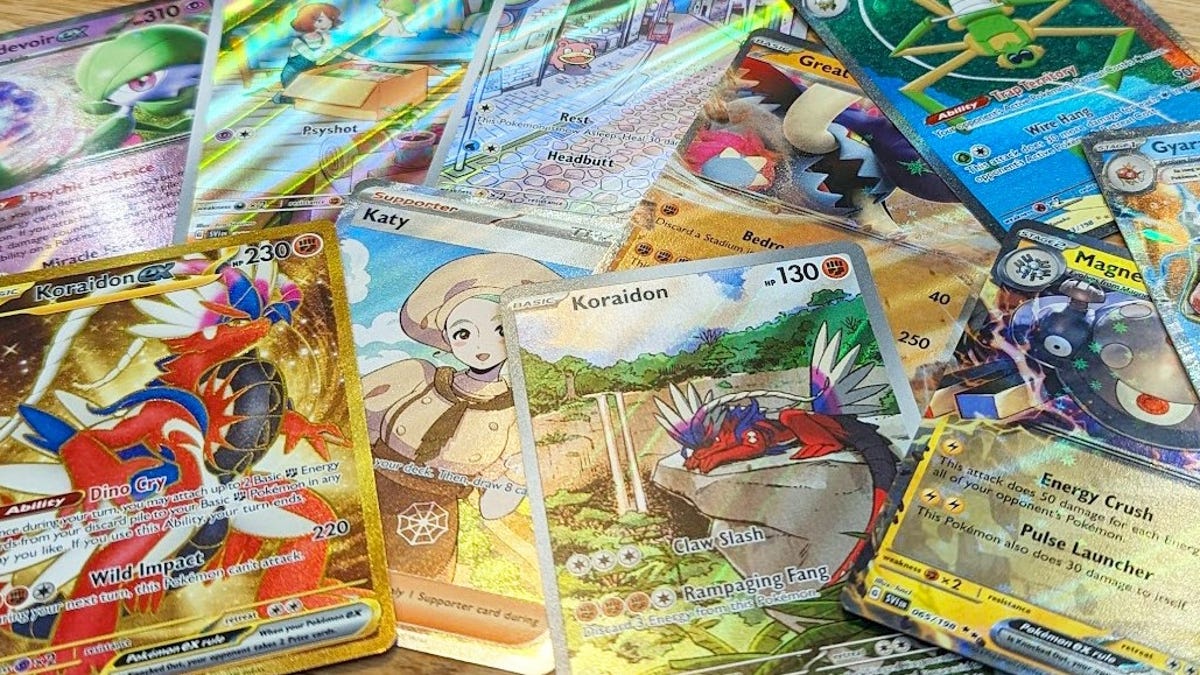

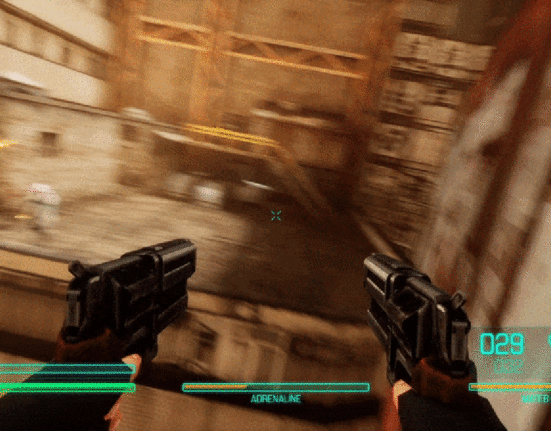
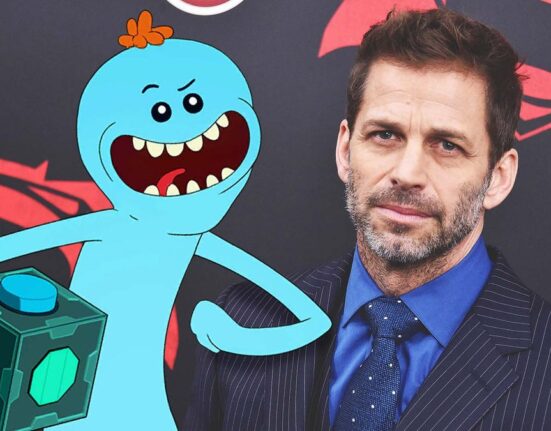
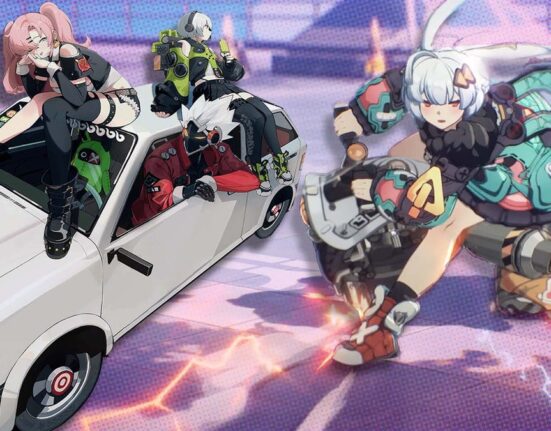
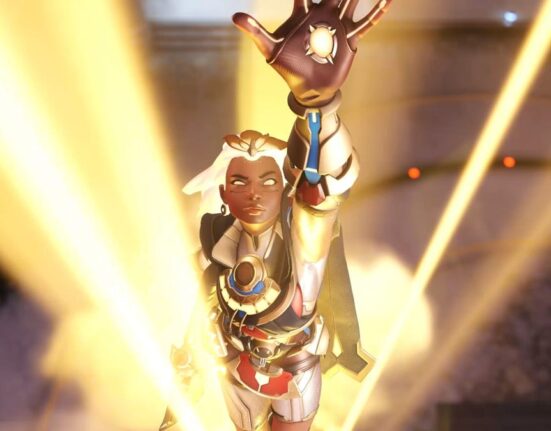
Leave feedback about this